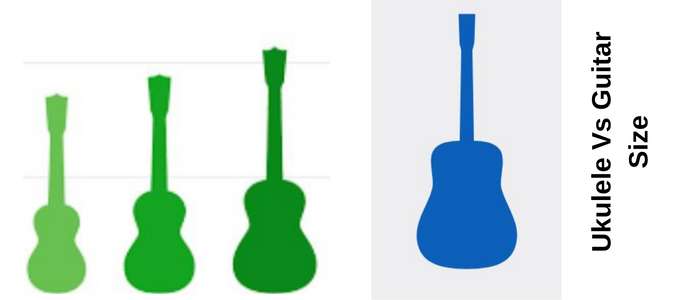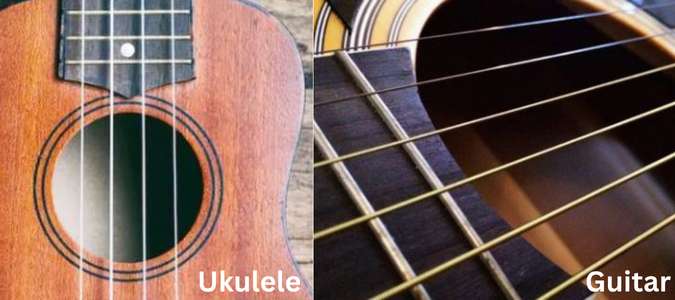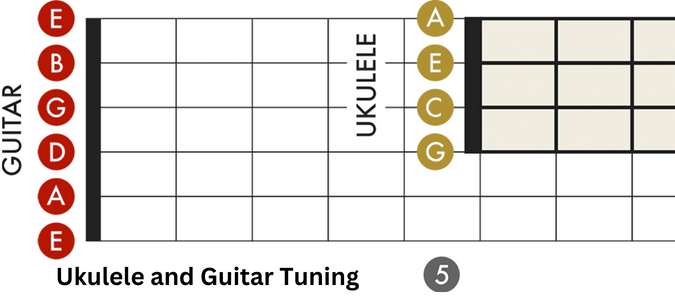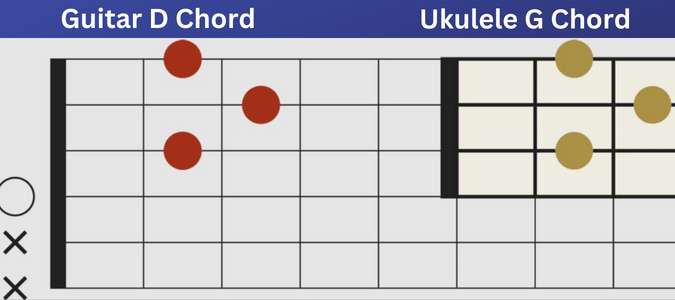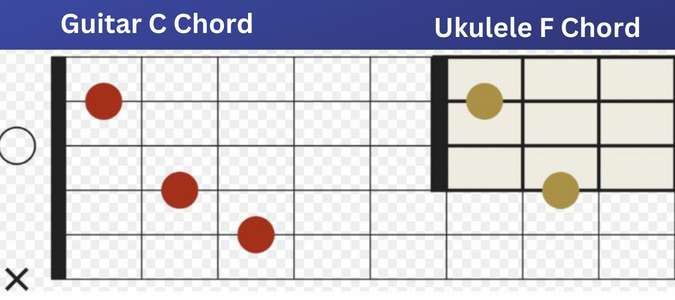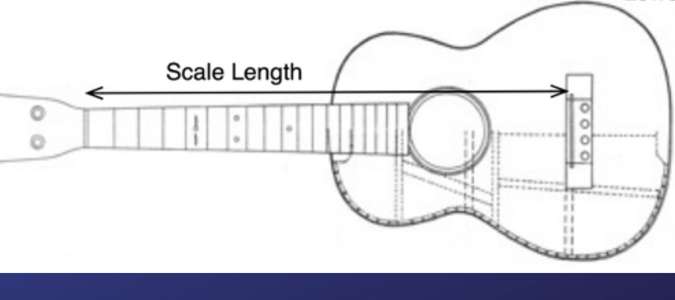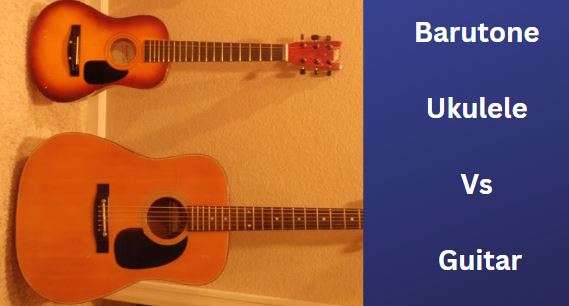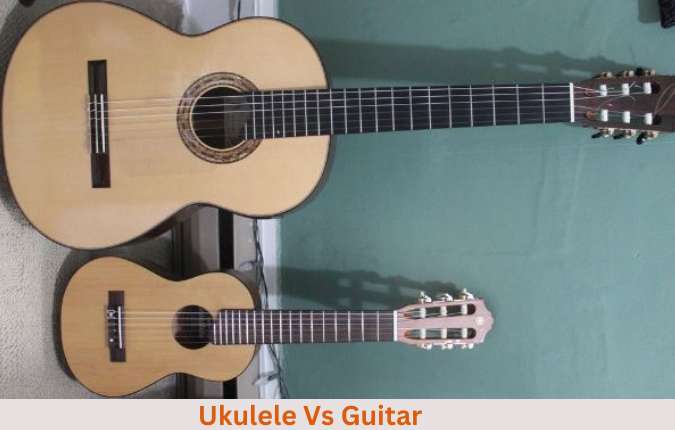
Ukulele Vs Guitar!
The ukulele is essentially considered the guitar’s younger brother. Although it’s pretty light in the historical repertoire, it has recently gained more popularity among contemporary musicians looking for a unique accompanying sound.
While thinking about music learning and stringed instruments, in particular, the matter often arises is “Is ukulele learning simple for kids?” Where they research to begin their musical journey.
Ultimately, the choice between the ukulele and guitar can rely on your targets and various factors, including size, feel, ease, complexity, sound, transportability, and cost.
Ukulele Vs Guitar: What are the differences?
There are conspicuous distinctions between the two musical instruments. But there are more subtle dissimilarities that might often become the deciding factor in ascertaining which is the best. We’re mentioning those below.
Size Differences
The size is the most perspicuous distinction between a ukulele and a guitar. Averagely, ukuleles remain about 35% to 50% short compared to guitars.
The main reason for the difference in volume, tone, and playability between a ukulele and a guitar is the size distinction between the two. Indeed, we are to talk about all these topics in more detail below.
The diagram below likens a soprano, concert, and tenor ukulele to a dreadnought guitar, the most general acoustic guitar shape. Also, we’ll talk about the baritone ukulele toward the article’s end.
Varying based on the manufacturer may be the exact size differences. But these will be pretty close to what you are viewing here.
| Ukulele (Except Baritone) |
Guitar | |
|---|---|---|
| Total Length | 21″ – 26″ | 38″ – 41″ |
| Body Length | 10″ – 13″ | 19″ – 21″ |
| Scale Length | 13″ – 17″ | 23″ – 26″ |
The Number of Strings
Another clear difference between the two is the number of strings, which is one of the most notable.
- Most ukuleles contain four strings.
- Most guitars contain six strings.
As a ukulele contains two fewer strings than a guitar, many musicians say it is a less troublesome instrument to learn.
Lesser strings imply there are plenty of common one- and two-finger chords. In truth, these simple chords offer a beautiful “on-ramp” into the stringed instrument world for new players and let them start music quickly.
Alternate string configurations like 12-string guitars and 8-string ukuleles are available in both guitars and ukuleles. Most ukuleles and guitars come in the standard 4-string and 6-string styles mentioned above.
String Types
Below is a brief presentation of the distinctions between the strings used on the ukulele and guitar:
Guitar Strings
- Construction using metal (generally).
- High tension.
- The loud and bright tone.
Ukulele strings
- Construction using nylon or similar pliable synthetic material.
- Less tension.
- Tender, warm tones.
For the most part, ukulele strings remain soft and stretch and have a low, tight feeling compared to guitar strings.
It’s one of the reasons why the ukulele is often seen as a more easy instrument than the guitar. Further, having a warmer, more subtle tone is also a part of the trend for the ukulele.
A single metal string is usually tuned to low-G in the ukulele-tuned low-G. Indeed, manufacturers use a thin synthetic thread with metal windings to make this string, much equivalent to a guitar string.
Tuning Distinctions (and Resemblances)
Here are the notes for the tunings of the standard ukulele and guitar:
- Ukuleles get tuned using the G-C-E-A method.
- Guitars get tuned using the E-A-G-D-B-E method.
Although ukuleles and guitars are tuned in different ways, both are related.
If fingers are put across the four highest-pitch strings on a guitar at the 5th fret, it’s possible to find a ukulele note.
In other words, a ukulele is similar to the guitar’s top 4 strings but is tuned up a fourth.
Below is an image to show the relationship between a guitar and a ukulele fretboard.
If players utilize standard ukulele tuning, the G string on the ukulele gets tuned up an octave. If they try with the low-G tuning, the notes will be similar to the top four guitar strings at the 5th fret.
Similar Chord Shapes
This tuning resemblance implies that many chord shapes remain the same on both instruments.
Some guitar chords work well on the ukulele, for example, the D guitar chord. If this shape is played on a ukulele, it results in a G chord, 4th higher.
You can utilize the same shape for guitar chords, incorporating low E or A, but you can move the bottom two guitar strings.
Occasionally, taking out the bottom 2 strings of a guitar chord dispels momentous notes in the chord.
Shifting a guitar shape directly to a ukulele can come in a chord that is not very well defined and might not produce a sound as you hope.
String Tension
String tension means a measurement of the “looseness” or “tightness” of the strings of any acoustic instrument.
- Guitar string tensions remain about 24 lbs to 35 lbs per string.
- Ukulele string tensions have about 7 lbs to 13 lbs per string.
You’ve noticed that a guitar’s string tension is about three times that of a ukulele.
High-string tension instruments produce a loud and bright sound, but the strings’ tightness contributes to making them difficult to play. On the other hand, less-tension instruments become straightforward to play but can’t produce as much volume.
Like string ingredients, thickness, and scale length, string tension can change for various reasons.
The Differences in Sound
The tone is one main distinction between the ukulele and the guitar. In reality, there are too many variations to construct an instrument that is impossible to mention in a one-size-fits-all explanation.
Matters like body size, tonewood, and manufacturer impact tone in ways that could be cumbersome to explain and quantify.
With that in mind, these short descriptions will impart a fundamental knowledge of what you expect.
Always keep in mind that playing style has a significant impact on tone. For instance, aggressive playing will produce different characteristics of an instrument from delicate fingerstyle playing.
Ukulele tone qualities
In comparison to the guitar, the ukulele contains a soft, gentle tone, more treble-focused. We’ve observed that many describe the ukulele tone as sweet, mellow, or harp-like.
These traits are mostly seen because of their little bodies, mellow strings, and low string tensions.
Guitar tone qualities
Usually, guitars feature brighter, louder, and contain much bass compared to ukuleles. It mostly happens because of its big body, spacious pitch range, and high-tension steel strings.
Players often use picks to play the guitar, which results in a lot of volume and brightness.
Classical guitars with nylon strings also contain a tone equivalent to a ukulele, but with included guitar volume and bass.
Length of Scale
The distance between the nut and the saddle is the scale length on a stringed instrument. In truth, it’s the section of strings that vibrate while playing.
The 25% to 50% short scale compared to a guitar is the scale of a ukulele, meaning that the frets remain closer together on a ukulele.
Nearby frets imply that players don’t need to extend too far to form chords. So it becomes ideal for players with small hands, children, or people who seek instruments, cozy and simple to play.
Scale length is also related to string tension. Indeed, minor scales generally contain low string tension compared to long scales.
Price
The question of price is not something to consider in discussing the difference between the Ukulele vs Guitar, but it is worth referring to it.
You can shop for an excellent entry-level ukulele for $50 to $100. It may seem too much to many, but indeed it’s too cheap in the acoustic instrument world.
An elegant entry-level guitar is about to require a minimum of $150, but these price-range guitars often require adjustment and setting before beginning to play in comfort.
If you have a tight budget or are searching for an instrument for children, we think it’ll be a more sensible choice to opt for a fantastic uke for under $100 rather than a guitar for over $150.
Baritone Ukulele Vs Guitar
The largest of the four primary ukulele sizes is the baritone ukulele, including a total length of around 29 inches.
Different from the other 3 sizes (soprano, concert, and tenor), a baritone uke gets tuned similarly to the top 4 strings of a guitar: D-G-B-E.
In another sense, a baritone uke features similar to a guitar without the two lowest strings (E and A), meaning that many guitar chords have the capability of translating outrightly to a baritone ukulele. But we told you earlier that some guitar chords will not be able to sound right unless those bottom 2 strings.
The similarity between the baritone uke and guitar aids in making it a natural 2nd instrument for many guitar players.
Ukulele vs Guitar: Which is Easier to Learn?
We consider the uke becomes easier to master compared to the guitar and much more accessible to newbies.
We’ve already covered most reasons in the preceding section, but below is a quick overview:
- Milder, less-tension strings: Simple on the fingers.
- Fewer strings: Easier chords, less intimidating, and quicker primary progression.
- Shorter scale: Less space between frets, lower expansion required.
- Small size: Child-friendly compared to most guitars.
- Tuning like guitars: Straightforward for converting to guitar in the next.
Although there’s no alternative to practice and dedication, learning opportunities in the uke are fewer. In our experience, musicians without previous experience can advance more rapidly with a ukulele, leading to more joyful and more time-consuming play.
Sure, which one to learn, Ukulele vs Guitar, is up to you. If you wish to learn guitar, walk for it! If you desire to master the guitar, there is no mistake in getting started on the guitar. But the remarkable thing is that the learning process for guitars seems a bit steep.
